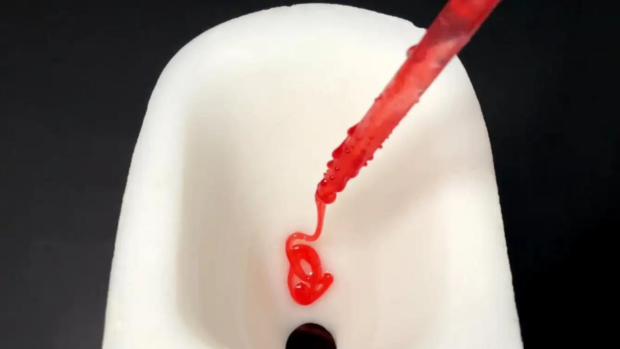Huazhong University of Science and Technology scientists have recently made a groundbreaking contribution to toilet technology using 3D printing. Yike Li and his team have developed a unique model toilet called the “abrasion-resistant super-slippery flush toilet (ARSFT)” that ensures no substances stick to its surface. This innovative creation has the potential to be an eco-friendly alternative to traditional latrines worldwide. While it may seem unusual for scientists to focus on toilet innovation, we should not overlook its significance.
In previous articles, I have emphasized that seemingly mundane experiments often have the most profound global impact. This Chinese toilet has the potential to significantly reduce waste and conserve water, making a substantial contribution to environmental preservation. In this article, we will delve into the latest research conducted by Huazhong University and explore the applications of 3D printing.
So, how does this Chinese toilet work? According to New Scientist, Li and his team used 3D printing to create the toilet by combining a mixture of plastic and hydrophobic sand grains. The particles were fused together using a laser, resulting in a complex model. To enhance the toilet’s non-stick properties, the team lubricated the surface with silicon oil, which penetrated below the surface due to the toilet’s unique structure. The final product, named the “abrasion-resistant super-slippery flush toilet (ARSFT),” can effectively allow substances such as milk, yogurt, highly sticky honey, muddy water, and starch gel mixed with congee to flow without leaving any undesirable marks.
To further test the functionality of the model, Li and his team utilized synthetic feces created from a recipe developed by the University of KwaZulu-Natal in South Africa. The mixture consisted of miso, yeast, peanut oil, and water, effectively simulating human waste. Despite subjecting the 3D-printed Chinese toilet to 1,000 abrasion cycles using sandpaper and a Stanley knife, it remained undamaged and retained its record-breaking super-slippery capability, as reported by Yahoo Finance.
While the Daily Mail reported on this unique Chinese research, Huazhong University of Science and Technology stated the importance of developing new methods for flushing toilets to minimize water consumption. Traditional flushing toilets require a significant amount of water due to the adhesions between the toilet surfaces and human waste. The global consumption of water solely for toilet flushing exceeds 141 billion liters per day, six times the entire water consumption of the African population. The ARSFT can also play a crucial role in public restrooms, especially in areas where current facilities lack the infrastructure to connect waste to city sewage treatment systems.
Now, let’s explore the applications of 3D printing. In simple terms, 3D printing involves building solid models by layering specific materials. For instance, fused filament fabrication utilizes molten polymer or plastic to create objects like keychains or toys. However, the applications of 3D printing extend beyond simple objects. NASA, for example, utilized this technology to create simulated environments for astronauts on their way to Mars. Furthermore, they plan to utilize 3D printing in constructing interstellar settlements to eliminate the need for multiple flights to transport building materials.
In another groundbreaking development, scientists at Stanford, including Mark Skylar-Scott, successfully 3D printed a human heart using living stem cells. By transforming stem cells into organ cells, they were able to print human heart tissue, potentially revolutionizing organ transplant procedures. This advancement could potentially save countless lives and reduce the reliance on organ donors.
Additionally, there are tools like the Shap-E, which combines generative artificial intelligence with 3D printing. This tool can create 3D models, similar to how ChatGPT generates text.
In conclusion, Huazhong University researchers have harnessed the power of 3D printing to create a toilet with exceptional non-stick properties. This innovation has the potential to save an enormous amount of water worldwide, equivalent to 141 billion liters per day, as reported by Yahoo Finance. Although the cost of this Chinese toilet has not been disclosed, its environmental benefits are undeniable. Stay up-to-date with other unique scientific advancements like self-repairing clothes on Inquirer Tech. Additionally, Inquirer Tech covers the latest trends and tips related to artificial intelligence, apps, and more.
Denial of responsibility! Vigour Times is an automatic aggregator of Global media. In each content, the hyperlink to the primary source is specified. All trademarks belong to their rightful owners, and all materials to their authors. For any complaint, please reach us at – [email protected]. We will take necessary action within 24 hours.


